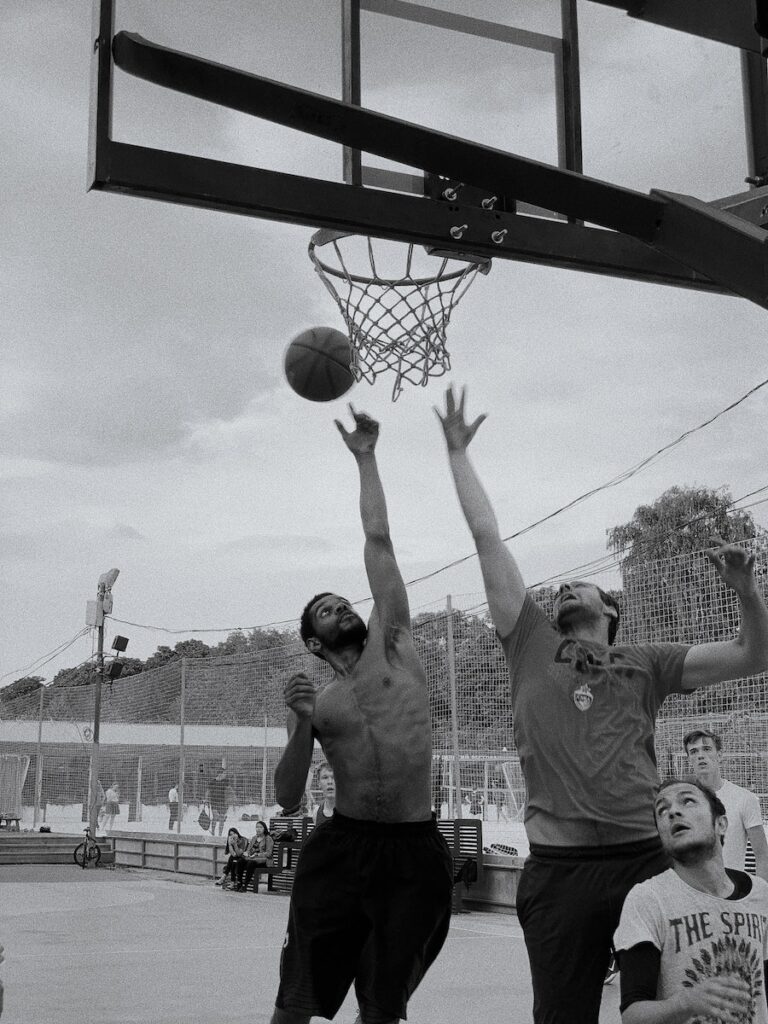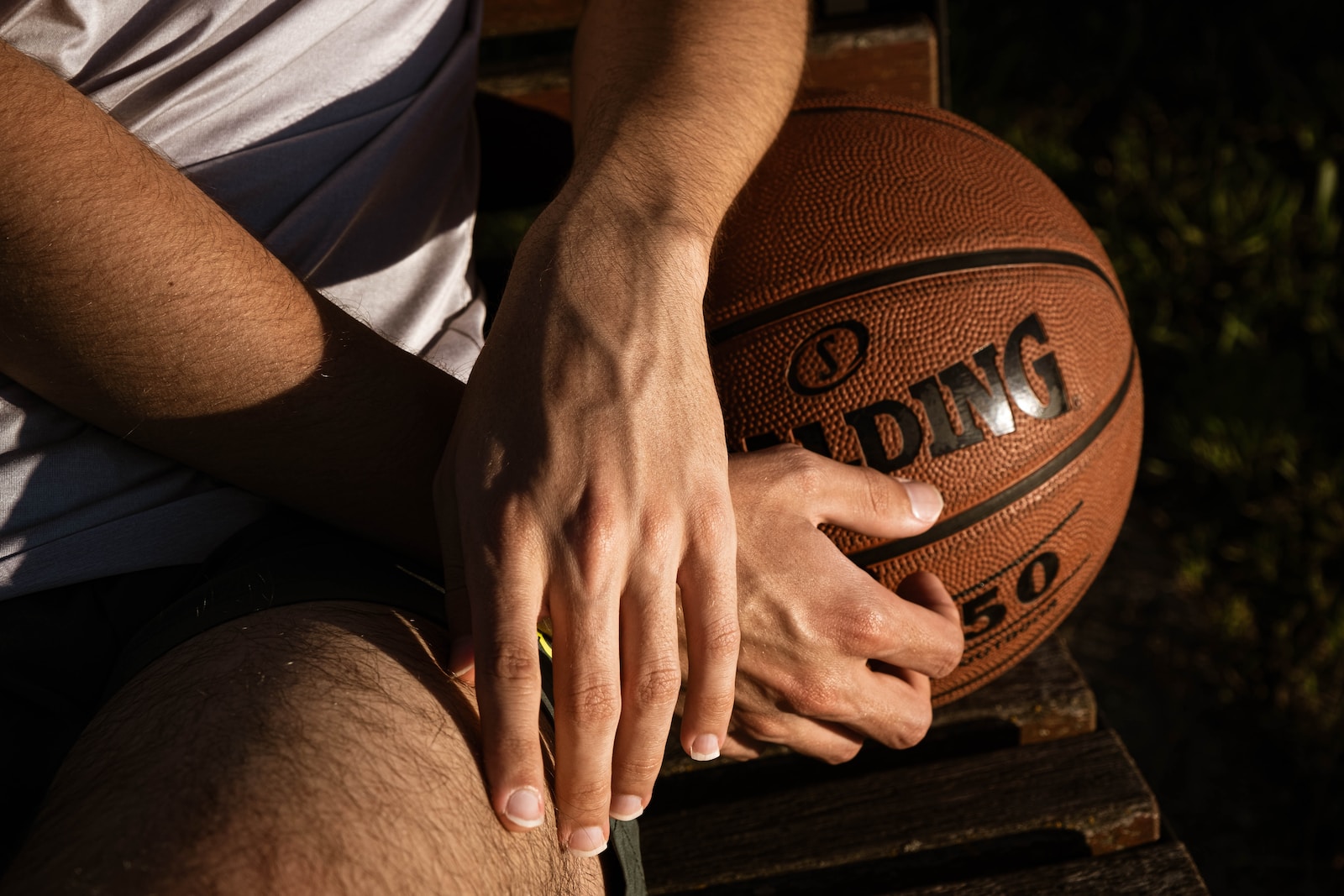Introduction
It’s not uncommon for a new basketball player to try and throw the ball up into the air and run over to catch it themselves. The same goes for a player that attempted a jump shot and airballed, but sprinted over and caught it himself to keep the possession alive. The problem is that new players don’t exactly know whether a move like that is legal or not.
So, can you catch your own air ball in basketball? To answer this question, no, you can’t do that. This is usually going to get cut down straight away as a foul, but there are some specific levels of the sport that leave it up to the officials. If you shoot the basketball, air ball it, then catch it yourself again before it touches the ground, the officials will call it a travel at the NBA level. Possession of the ball would immediately go to the other team.
This Falls Under Multiple Categories
The NBA has determined very clearly that if you catch your own air ball, you would be whistled for a traveling violation and a turnover. It doesn’t matter if you were attempting a shot or not, the referees would call that every single time.
As for the NCAA and high school basketball, there is a technicality in the rulebook that doesn’t exactly make it a traveling violation if you catch your own air ball. However, some sources have stated that the referees at these levels are allowed to make a judgement call on whether or not it should be deemed a traveling violation. There are officials that will let it slide if they think you gave a solid shot attempt.
The reason why it’s loose in high school and the NCAA is because most players at these levels don’t often think of purposefully airballing in order to get closer to the rim as an advantage. Most of the time, that strategy just wouldn’t work out very well. So, even if there are some loopholes in the rulebook at lower levels, it won’t work 99 percent of the time.
Tipped Shots Change It Up
Let’s say that you just attempted a three-pointer and the ball barely got tipped by the defender so you airball. Instead of just running back to the other end, you sprint forward and grab the airball before it hits the ground and continue your possession. This would be a completely legal move, regardless of your level of basketball. If the ball gets tipped, it’s essentially a loose ball that’s up for grabs.
While you can absolutely think of it as an airball, the deflection negates it and keeps the possession alive for the taking. You can think of this as something very similar to the rule regarding dribbling. That rule states that when you pick up your dribble, you can’t move any further without either shooting or passing the ball.
However, you are able to move freely again if the defender knocks the ball out of your hands and you pick it back up again. It’s up to the referees to catch these small deflections and tips, but they often do and allow you to get past some of these violations.
It’s Not A Dribble Advantage
Even if there’s a loophole in the rulebook at certain levels for catching your own airball, you absolutely can’t use it as a way to dribble without actually dribbling. An example would be if you get stopped by a defender and you pick up your dribble. You can’t move without shooting or passing, but you get this idea to toss the ball over the head of your opponent, then run after it and catch it in a different spot. In your mind, you didn’t have possession of the ball so you could move freely, but it doesn’t work like that.
Even if you pretended like you were trying to shoot it and do that, the officials will likely catch onto what you’re trying to do and shut that down. In pickup basketball, many people who are competitive will not let something like that slide, as it’s usually very apparent when that’s being used to try and gain an advantage. I mean, it’s not exactly something that you can do smoothly that slips past people.
The Most Misunderstood Rule In Basketball
It’s actually insane how many people consider this exact situation to be the most misunderstood rule that basketball has to offer. Whether you look the answer up online or ask a friend in the gym, you will usually get very different answers from one another depending on how they see the action in their heads. Looking at professional league rulebooks can give you varying answers as well! FIBA, the NCAA, and most high schools don’t have a rule specifying that you can’t catch your own air ball.

Meanwhile, the NBA makes it very clear that you can’t do that no matter the circumstances. Some might even be able to say that it’s a complete judgment call by the referees you have at the time or the people you’re competing against in pickup games. Unfortunately, this is likely something that will continue being misunderstood due to how rarely it happens during actual professional league games.
Can’t Do It During Free Throws
Finally, we need to mention that you can’t catch your own air ball when attempting a free throw. It is easy to think about doing that towards the final seconds of a ball game and your team needing just one extra point to tie it up or take the lead. In the NBA, you often see many players head to the line while trying to miss on purpose.
However, the rule in that league is that you have to at least hit the rim before going and grabbing it again, otherwise there would be a violation. So, players can’t just clang it off the backboard back towards them or gently toss it up in the air and catch it again themselves for that extra point. It might seem good in theory, but it doesn’t work that way.
